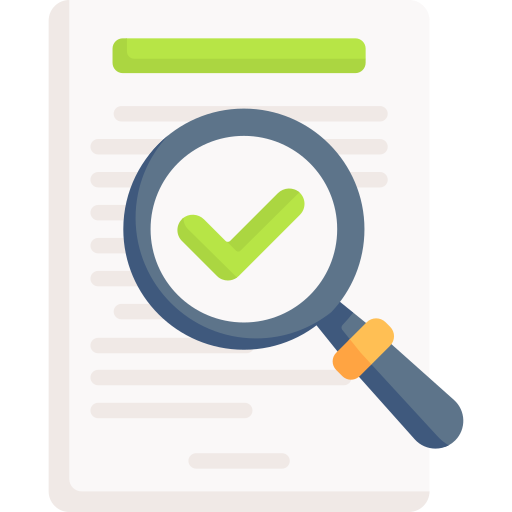In November of 2024, Insight Global conducted a survey of hiring managers and found that a whopping 99 percent of them used Artificial Intelligence in some capacity during the hiring process. Clearly, AI has quickly become a vital tool for weeding through resumes, evaluating job candidates, and even writing job postings. But can AI really write a job posting better than a human?
Let’s find out.
Need Editing and
Proofreading Services?

What does AI do well?
AI tools like ChatGPT and Claude can generate job descriptions in seconds. So can AI writing assistants like the ones built into LinkedIn, Indeed, and other job search platforms.
If you’re a hiring manager, these AI tools can be helpful if you:
- Need a starting point: AI can take a job title and a few bullet points and transform that information into a complete post. This can save you time and reduce writer’s block.
- Want to keep your description simple: AI tools tend to use everyday language that is easy to read. This can help make your job posting more accessible to a wider audience.
- Have many vacant positions: If you need several new employees across different departments, AI can crank out multiple drafts quickly, making your job a lot easier!
Where does AI fall short?
Despite the benefits listed above, the quality of AI-generated job postings is usually just okay, not great. AI can also make mistakes, and these tend to be different from the types of mistakes a human might make. So be on the lookout for:
- Generic language: AI tends to produce copy that sounds polished, but bland. Since the AI is a machine rather than an actual human who knows all the ins and outs of your business, its job postings won’t include any of the nuances that will showcase your company’s unique voice.
- Missing or vague details: In addition to sounding bland, AI-generated writing tends to be vague. It might “forget” to include key information about the position, qualifications, or instructions for potential applicants.
- Possible biases: AI only reflects the data it has been trained on. That means it can unintentionally reproduce stereotypes or exclude certain groups. (You can find our TextRanch article about AI bias here, plus a study focused on AI bias in healthcare here.)
- It doesn’t tell job seekers “why”: AI might cover the basics, but it won’t give top-tier job candidates any sense of why they would want to work for your business instead of someone else’s.
How can you use AI the right way?
Sure, you can use AI to help you write job postings. The key is to let the AI do certain types of heavy lifting while you give the text your own unique human touch.
Here are some tips to help you find the right balance:
- Remember that AI is a tool that cannot replace your own skills and judgment. Go ahead and use AI for first drafts, but always review and edit your job posts. Add human touches, clarify your company’s values, and tailor the AI-generated language to fit your brand.
- Focus on accuracy. Double-check all responsibilities, qualifications, and benefits. Also make sure your AI tool behaved itself and didn’t invent any details, make any mistakes, or use outdated language.
- Adjust the tone. Do you want your job posting to be formal and professional, or friendly and casual? Make sure your AI-generated job posting reflects your company culture and the kind of relationship you want to build with job candidates.
- Make sure all key information is included. Even if everything looks good at first glance, dig a little deeper to make sure there’s nothing missing. Imagine you’re a job seeker reading your post—would you find anything confusing?
- Check for bias. Does the AI-generated ad say you’re looking for a “salesman” rather than a “sales representative”? Is there any other problematic language that could turn away qualified candidates?
- Keep multiple job postings consistent. If you’re trying to fill multiple vacancies, check each individual job posting carefully to make sure they all reflect your company’s culture and values.
Bonus Tip: Add some unique words and phrases
The AI tools that can write job postings were trained by using data from countless human-generated job postings. The AI’s algorithms look for commonly used words, phrases, and patterns. The end result is the generic language we mentioned earlier in this article.
Here are some overused words/phrases you may wish to avoid:
- Fast-paced environment
- Team player
- Dynamic
- Self-starter
- Think outside the box
Whenever your AI tool uses one of the above clichés, try to substitute it with specific information about the position. For example, instead of the generic “fast-paced environment”, let job seekers know that your company is launching three new products this fall, so you’re looking for someone who can juggle multiple responsibilities.
Need Editing and
Proofreading Services?

AI really can make life easier for busy hiring teams. But job postings are more than just a list of duties—they’re a candidate’s first impression of your company. So don’t post an AI-generated job description without checking it and adding your own embellishments. And then check it again!
Even the best AI tools can miss the mark, especially when you’re writing for a global marketplace or targeting candidates whose first language isn’t English. That’s where TextRanch comes in.
Our human English experts can fix awkward or robotic AI phrasing and make sure your message is clear, natural, and professional.
Click the blue button below and see the difference a human can make!








Ask an Editor: A New TextRanch Feature!
Proofreading vs. Editing: What’s the Difference?
Human Editors: Why Do You Need One?
How can I improve my understanding of native-English speakers? Part 1